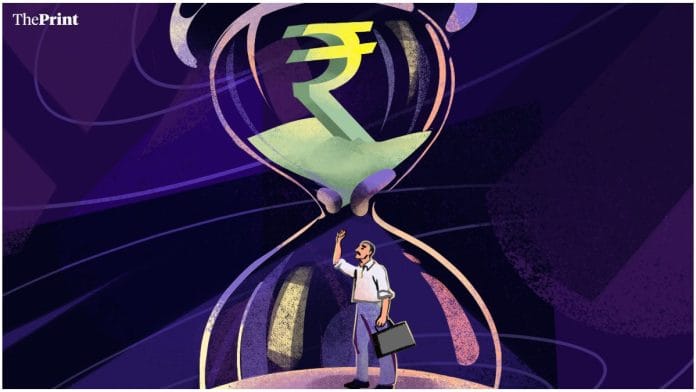One does not ordinarily look for political signals in work commissioned by the Reserve Bank of India (RBI), but they do show through sometimes, even if unintentionally. A case in point is the periodic surveys of consumer sentiment in urban areas, commissioned and put out by the RBI.
These seem to show that what Prime Minister Narendra Modi has been able to do very effectively is to fill urban Indians with hope. Even if their immediate economic situation is difficult, or has not improved, they have become more hopeful about the future — in a way that apparently was not true before Mr Modi’s advent.
The duality in consumer assessments of the present and the future is caught in two indices based on the RBI surveys: The current situation index and the future expectations index.
In 2013, the two indices tracked each other closely; the current situation index for September that year was 88, and the future expectations index at 90.5. By December, the two indices started diverging; while the current index saw a little improvement at 90.7, the future expectations index jumped to 100.7 — a gap of 10 points. And by March and June of 2014, on the cusp of regime change, the gap between current and future expanded to 15 points and then 22.5 points.
In the years since, the gap expanded further. For while the current index of consumer confidence for May 2023 is more or less back to where it was almost a decade ago, at 88.5 (reflecting concerns about inflation, a decline in spending on non-essentials, and the employment situation), the future expectations index is elevated at 116.3.
The present consumer sentiment is below what might be considered normal, but hope that things will have improved a year ahead remains high.
Mr Modi’s term in office can in turn be divided into two clear periods: Before and after demonetisation. Before November 2016, the current situation index consistently featured above the 100 mark, while the future index hovered around or above the 120 level.
Demonetisation marked a turning point. The score for the current index dipped abruptly thereafter and then stayed below 100 till March 2019, when it spurted briefly to 104.6. At the same time the future expectations index climbed a steep mountain, reaching a decadal high of 133.4. That brief uptick in consumer sentiment may have been just in time to help the Bharatiya Janata Party (BJP) sweep to victory in the Lok Sabha elections held in the summer of 2019.
Also read: FY23’s positive GDP data hides worrying trends: Weak consumption, sustained slump in manufacturing
Two points are worth noting. First, there was no point in the recurring surveys when people were pessimistic about their overall economic situation while looking a year ahead; the future index always scored better than the current situation index.
In fact, during the Covid period, the current index had dipped to as low as 50. It remained at or about this depressed level for over a year, but the remarkable fact is that the future expectations index remained at about 100. At one stage the gap between sentiments about the current and future situations was 60 points.
Despite the crisis in their lives, most people in towns and cities assumed that their current difficulties were temporary. And so they have proved to be, since the current index of consumer confidence has recovered substantially.
But this brings up the second point of note. Neither index has reached anywhere near the March 2019 levels since. At 88.5 the index is still to rise much above the pre-Covid crackdown of March 2020, when the score was 85.6. And that level was a sharp drop from 104.6 at election time a year earlier.
If indeed the level of consumer confidence is a political bellwether, the question is whether the present level of the current situation index is good enough for the BJP to score another electoral triumph, a year hence. Or does the index have to climb substantially and cross the 100 threshold, as happened in 2019? That would mean retail inflation being brought under control, employment prospects improved, and more money put in people’s pockets, in order for the party to make the political cut.
By special arrangement with Business Standard.
Also read: Can India earn ‘developed’ tag by 2047? GDP growth seems elusive, human development may be easier






